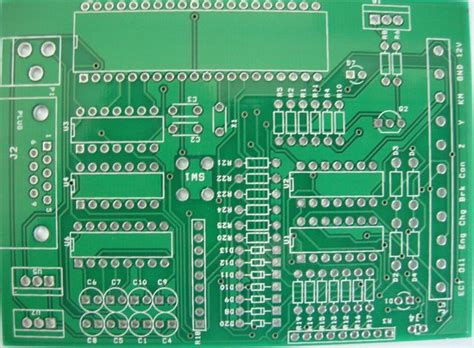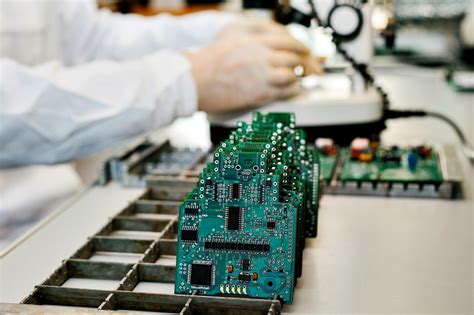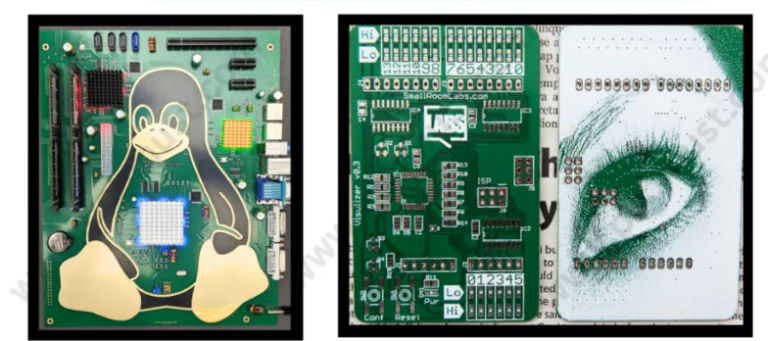High-Frequency Materials for PCB Design: Properties, Applications, and Selection Criteria
Abstract
High-frequency printed circuit boards (PCBs) are essential components in modern wireless communication systems, radar, satellite technology, and high-speed digital applications. The performance of these PCBs heavily depends on the dielectric materials used, which must exhibit low dielectric loss, stable permittivity, and optimal thermal properties. This article explores the key characteristics of high-frequency PCB materials, their applications, and guidelines for material selection.
1. Introduction
As electronic devices operate at increasingly higher frequencies—ranging from RF (Radio Frequency) to microwave and millimeter-wave bands—the demand for advanced PCB materials has grown significantly. Traditional FR-4 substrates are unsuitable for high-frequency applications due to their high dielectric loss and inconsistent electrical properties. Instead, specialized high-frequency laminates such as PTFE-based, ceramic-filled, and hydrocarbon-based materials are employed to ensure signal integrity, minimal dispersion, and thermal stability.
This article discusses the critical properties of high-frequency PCB materials, their advantages, and their applications in various industries.
2. Key Properties of High-Frequency PCB Materials
2.1 Dielectric Constant (Dk)
The dielectric constant (Dk) is a measure of a material’s ability to store electrical energy in an electric field. For high-frequency PCBs, a stable and low Dk is crucial because:
- A lower Dk reduces signal propagation delay.
- It minimizes capacitive coupling between traces.
- It ensures consistent impedance matching.
Materials like Rogers RO4000® series and Taconic TLY™ exhibit stable Dk values across a wide frequency range.
2.2 Dissipation Factor (Df)
The dissipation factor (Df), or loss tangent, indicates the amount of signal loss due to dielectric absorption. A low Df is essential for:
- Minimizing signal attenuation.
- Improving power efficiency in RF circuits.
- Enhancing high-frequency performance.
PTFE (Polytetrafluoroethylene) materials, such as Rogers RT/duroid®, offer ultra-low Df values (<0.002), making them ideal for millimeter-wave applications.
2.3 Thermal Stability
High-frequency circuits often generate significant heat, requiring materials with:
- Low coefficient of thermal expansion (CTE).
- High thermal conductivity for efficient heat dissipation.
- Resistance to thermal degradation.
Ceramic-filled materials like Isola I-Tera® MT40 provide excellent thermal management for high-power RF applications.
2.4 Moisture Absorption
Moisture absorption can alter a material’s Dk and Df, leading to performance degradation. High-frequency laminates must have low moisture absorption to maintain stable electrical properties in humid environments.
2.5 Mechanical Strength
PCBs must withstand mechanical stress during fabrication and operation. High-frequency materials should offer:
- Good dimensional stability.
- High peel strength for copper adhesion.
- Resistance to delamination.

3. Common High-Frequency PCB Materials
3.1 PTFE-Based Materials
PTFE (Teflon) is widely used due to its excellent electrical properties:
- Extremely low Dk (~2.1) and Df (~0.0009).
- Suitable for frequencies up to 100 GHz.
- Used in aerospace, defense, and 5G communications.
Examples: Rogers RT/duroid® 5880, Taconic RF-35.
3.2 Ceramic-Filled PTFE
These materials combine PTFE with ceramic additives to enhance thermal and mechanical properties:
- Improved thermal conductivity.
- Higher rigidity compared to pure PTFE.
- Used in high-power RF amplifiers and base stations.
Examples: Rogers RO3003®, Taconic RF-60TC.
3.3 Hydrocarbon-Based Laminates
These materials offer a balance between performance and cost:
- Moderate Dk (2.5–3.5) and low Df.
- Easier fabrication than PTFE.
- Common in automotive radar and wireless infrastructure.
Examples: Isola Astra® MT77, Panasonic Megtron 6.
3.4 Liquid Crystal Polymer (LCP)
LCP is emerging as a flexible high-frequency material:
- Ultra-low moisture absorption.
- Suitable for flexible PCBs and mmWave applications.
- Used in wearable electronics and high-speed connectors.
4. Applications of High-Frequency PCBs
4.1 5G Communication
5G networks operate at sub-6 GHz and millimeter-wave (24–100 GHz) frequencies, requiring PCBs with minimal signal loss. High-frequency laminates enable:
- Low-latency signal transmission.
- High data rate capabilities.
- Compact antenna designs.
4.2 Aerospace and Defense
Radar systems, satellite communications, and electronic warfare rely on high-frequency PCBs for:
- Stable performance in extreme environments.
- High power handling.
- Lightweight and durable constructions.
4.3 Automotive Radar
Advanced driver-assistance systems (ADAS) use 77 GHz radar PCBs, demanding:
- Low-loss materials for accurate signal processing.
- Resistance to vibration and temperature fluctuations.
4.4 Medical Imaging
High-frequency PCBs are used in MRI and ultrasonic equipment where signal integrity is critical.

5. Selection Criteria for High-Frequency PCB Materials
When choosing a material, engineers must consider:
- Frequency Range – Higher frequencies require lower Dk and Df.
- Thermal Requirements – High-power applications need materials with good thermal conductivity.
- Fabrication Compatibility – Some materials (e.g., PTFE) require specialized processing.
- Cost Constraints – Hydrocarbon-based laminates offer a cost-effective alternative to PTFE.
- Environmental Conditions – Military and aerospace applications demand moisture-resistant materials.
6. Future Trends in High-Frequency PCB Materials
- Integration with Advanced Packaging – Embedded die and fan-out wafer-level packaging (FOWLP) will require new high-frequency substrates.
- Higher Frequency Support – Beyond 100 GHz, new materials like glass-reinforced LCP will gain traction.
- Sustainable Materials – Eco-friendly high-performance laminates are under development.
7. Conclusion
High-frequency PCB materials play a pivotal role in modern electronics, enabling advancements in wireless communication, automotive safety, and defense systems. By understanding the critical properties—such as Dk, Df, thermal stability, and moisture resistance—engineers can select the optimal material for their application. As technology progresses, innovations in high-frequency laminates will continue to push the boundaries of high-speed and high-frequency electronics.







